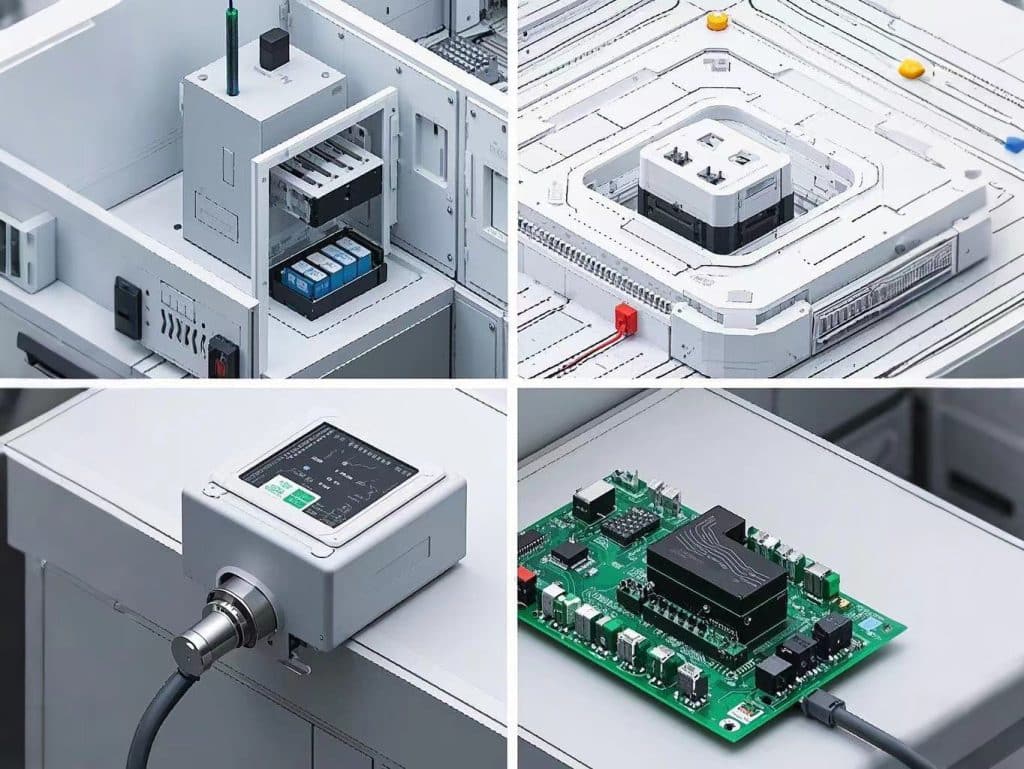Understand the role of GDT in providing overvoltage protection in circuits and preventing surges from damaging equipment.
Overvoltage protection is essential in electronic circuits. In addition to commonly used components like Metal Oxide Varistors (MOVs) and Surge Protective Devices (SPDs), Gas Discharge Tubes (GDTs) are highly effective transient voltage suppression components widely used in telecommunications, power systems, industrial control, and more.
[Boarden Wiki] will take you through an in-depth exploration of the working principles, key features, and typical applications of GDT, helping you choose the right circuit protection solution.
1. What is a GDT?
Gas Discharge Tube (GDT) is an overvoltage protection component that operates based on gas breakdown principles. It typically consists of two or three electrodes enclosed in a ceramic tube filled with inert gas. When the external voltage exceeds its breakdown voltage, the gas inside the GDT ionizes, forming a low-impedance path to divert excess voltage to the ground, thereby protecting downstream circuits from damage.
Key Features:
✅ High Surge Current Capability – Ideal for handling high-energy transient events such as lightning and power surges.
✅ Low Capacitance – Minimal impact on high-frequency signals, making it suitable for telecommunications applications.
✅ Fast Response – Triggers in nanoseconds to effectively suppress transient overvoltage.
✅ High Insulation Resistance – Extremely low leakage current under normal operation, ensuring circuit stability.
2. How Does a GDT Work?
GDTs function based on gas ionization and arc discharge principles.
🔹 Normal State: When voltage is below the breakdown threshold, the GDT remains in a high-impedance state, having minimal impact on circuit operation.
🔹 Overvoltage Condition: When transient voltage reaches the GDT’s breakdown voltage (typically tens to thousands of volts), the gas inside ionizes, creating a low-resistance path that quickly diverts the surge to the ground.
🔹 Recovery State: Once the voltage returns to a safe level, the GDT restores to its high-impedance state, maintaining high insulation protection.
3. GDT vs. MOV vs. TVS: Choosing the Right Circuit Protection Solution
| Parameter | GDT (Gas Discharge Tube) | MOV (Metal Oxide Varistor) | TVS (Transient Voltage Suppressor Diode) |
|---|---|---|---|
| Response Speed | Nanoseconds | Microseconds | Picoseconds |
| Surge Withstanding Capability | Very High (>10kA) | High (Hundreds of A – 1kA) | Low (Tens of A) |
| Leakage Current | Extremely Low (pA level) | Exists (µA level) | Exists (µA level) |
| Typical Applications | Lightning protection, telecom devices | Power supplies, household appliances, industrial equipment | Data lines, signal protection |
💡 💡 Selection Guide:
✔ Lightning protection, industrial equipment, and telecom ports → Choose GDT
✔ AC/DC power circuit protection → Choose MOV
✔ High-speed signal and PCB-level protection → Choose TVS
4. Typical Applications of GDTs
🔸 Telecommunications (Fiber Optics, Telephones, Base Stations)
GDTs have ultra-low capacitance (<1pF), ensuring they do not interfere with high-frequency signal transmission. They are commonly used in RJ11 telephone interfaces, fiber optic communication ports, and Ethernet ports.
🔸 Power and Industrial Equipment
High-power devices are susceptible to lightning and power surges. GDTs serve as the first line of defense and can be combined with MOVs or TVS diodes in a multi-stage protection setup to enhance resistance to transient interference.
🔸 New Energy & Automotive Electronics
GDTs are widely used in EV charging stations and photovoltaic inverters, which require robust lightning protection in high-voltage environments. They effectively prevent transient overvoltage damage in these applications.
5. GDT Selection Guide
When selecting a suitable GDT, consider the following key parameters:
✔ Breakdown Voltage (Vbr): Should be higher than the normal operating voltage but lower than the circuit’s maximum voltage tolerance.
✔ Surge Current (Imax): Choose a model that meets lightning protection standards (e.g., 8/20µs, 10/1000µs waveform ratings).
✔ Capacitance: For high-frequency applications (such as RF and telecom), opt for low-capacitance GDTs.
✔ Package Type: Select SMD or through-hole packages based on space constraints and mounting preferences.
Gas Discharge Tubes (GDTs) are the ultimate defense against high-energy transient overvoltage, making them ideal for telecommunications, power systems, and industrial control applications. In practical use, combining GDTs with MOVs, TVS diodes, and other protection components can create a comprehensive circuit protection solution.
If you have any questions about GDT selection or application, feel free to contact [Boarden], our team is ready to provide professional support and recommend the most suitable circuit protection solutions for your projects!
🚀 Explore more circuit protection components on [Boarden Wiki]

Boarden Make Electrical Circuits More Safety and Reliability
Click [Contact Us] to get free samples and technical consultations!


